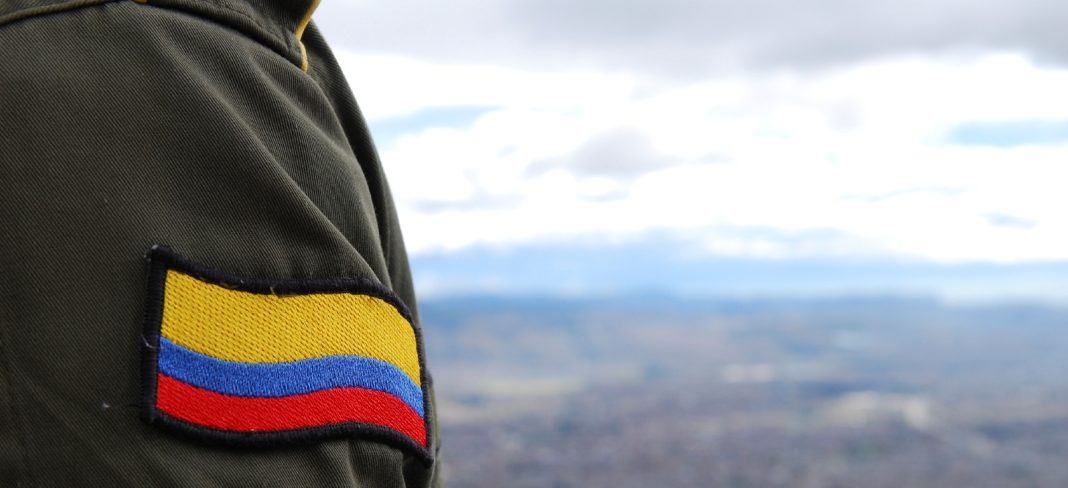February 28, 2014
In 2008, it was revealed that Colombian soldiers had lured civilians to remote areas, killed them, and dressed them in items of clothing worn by guerrilleros. They presented the bodies to the authorities as insurgents killed in battle in order to receive promotions and other target-related benefits. Estimates of the number of people killed range from 4,000 to 5,000, and the victims became known as ‘falsos positivos’, or ‘false positives’.
 This week a procurement scandal in the Ministry of Defence revealed that a culture of impunity has allowed an extensive network of corrupt officials to develop within the Colombian defence establishment. The procurement corruption, in part, funded the lawyers of those implicated in the ‘falsos positivos’ charges,
This week a procurement scandal in the Ministry of Defence revealed that a culture of impunity has allowed an extensive network of corrupt officials to develop within the Colombian defence establishment. The procurement corruption, in part, funded the lawyers of those implicated in the ‘falsos positivos’ charges,
The scandal reaches the very heights of the military high-command—military Chief General Leonardo Barrero and four other generals have been forced from their positions as a result of the revelations.
The scandal erupted when Colombian magazine Semana revealed that it has hundreds of hours of audio footage in which senior officers make explicit references to military contracts worth 300 million Colombian Pesos (roughly £88,750 GBP). In these conversations, military officials talk of bribes of up to fifty per cent of the contracts. The recordings reveal bid-rigging using privileged information, including the purchasing plans of various military units, by senior officers. The beneficiaries of the bribes include senior officials already serving time in military gaol for their involvement in the falsos positivos scandal.
One of those implicated is Colonel Robinson Gonzalez del Rio, infamous for his corrupt dealings with the courts last year. In the recordings he discusses awarding contracts on the basis of preferential treatment. The conversations indicate that part of the profits from the contracts will line Gonzalez’s own pockets, part will go to various senior officials imprisoned on charges relating to the falsos positivos scandal, and the rest will be allocated for various projects, including deals with generals in Ecuador’s Ministry of Defence and Venezuelan contractors. Col. Gonzalez can also be heard talking about organising payments to other prisoners connected to the scandal to encourage them to maintain their silence.
The articles also reveal that, with the knowledge of Commanders of ten military units, a large part of the budget for military vehicles has been siphoned off for personal profit. Airplane tickets intended for the use of military personnel have been used by the lawyers of those accused in the falsos positivos events. The current President of Colombia, Juan Manuel Santos, had hoped to put the falsos positivos scandal behind him — 2014 is an election year in Colombia. As Minister of Defence at the time, Santos denied all knowledge of the extrajudicial executions. Santos has ordered a full investigation by the Ministry of Defence, and appears to recognize the damage that the scandal has done to the legitimacy of both the armed forces and the government.
If Santos is genuinely interested in reform of the Defence sector in Colombia, he will need to go beyond an investigation into these scandals. He and General Juan Pablo Rodriguez Barragan, Barrero’s replacement, must address corruption risk in the Colombian defence system and put in place mechanisms to prevent this from happening again.
What does the case show, and what can be done about it?
Justice must be swifter. The falsos positivos scandal first came to light in 2008; it was just the tip of the iceberg.
In line with the recommendation of Transparencia Colombia, the government should dedicate more funds and resources to identifying corruption risks and investigating corruption claims.
Stronger provisions for whistle-blowers could have helped to knock the scandal on the head before it started, rather than waiting for it to be exposed by journalists—they have the right to expose corruption, but the burden should not be solely on them. Other recent scandals involving the police and security services have shown the need to police these institutions, rather than turn a blind eye to their activities.
Corrupt and illegal behaviour is happening from the bottom to the top of the defence establishment. A high position must not mean that you’re immune from accountability.
The Colombian MOD must ensure that a clear Code of Conduct is in place that addresses bribery and other corrupt acts. But this can’t just be on paper: the government must demonstrate that breaches of this Code of Conduct will be addressed.
Procurement is an area particularly prone to corruption, and can provide funds for other corrupt behaviour.
The government must strengthen accounting and oversight measures of defence purchases, ensuring that the legislature and civil society can monitor every step of the procurement process, from tender to delivery.
Publishing a detailed and transparent defence budget would also help to prevent the misallocation of funds by allowing civil society to see the correct destination of funds, and monitor whether they’re being used as planned.
In 2013, TI-DSP published the Government Defence Anti-Corruption Index, in which we analysed the corruption risks of 82 countries, including Colombia. For a detailed analysis of where we see corruption risks in the Colombian defence establishment, read the country report here.
___________________________________________________________________________________
* Emma Kerr is Project Officer with Transparency International UK and has worked in Colombia and Paraguay.
Big photo credit: Transparency International UK

